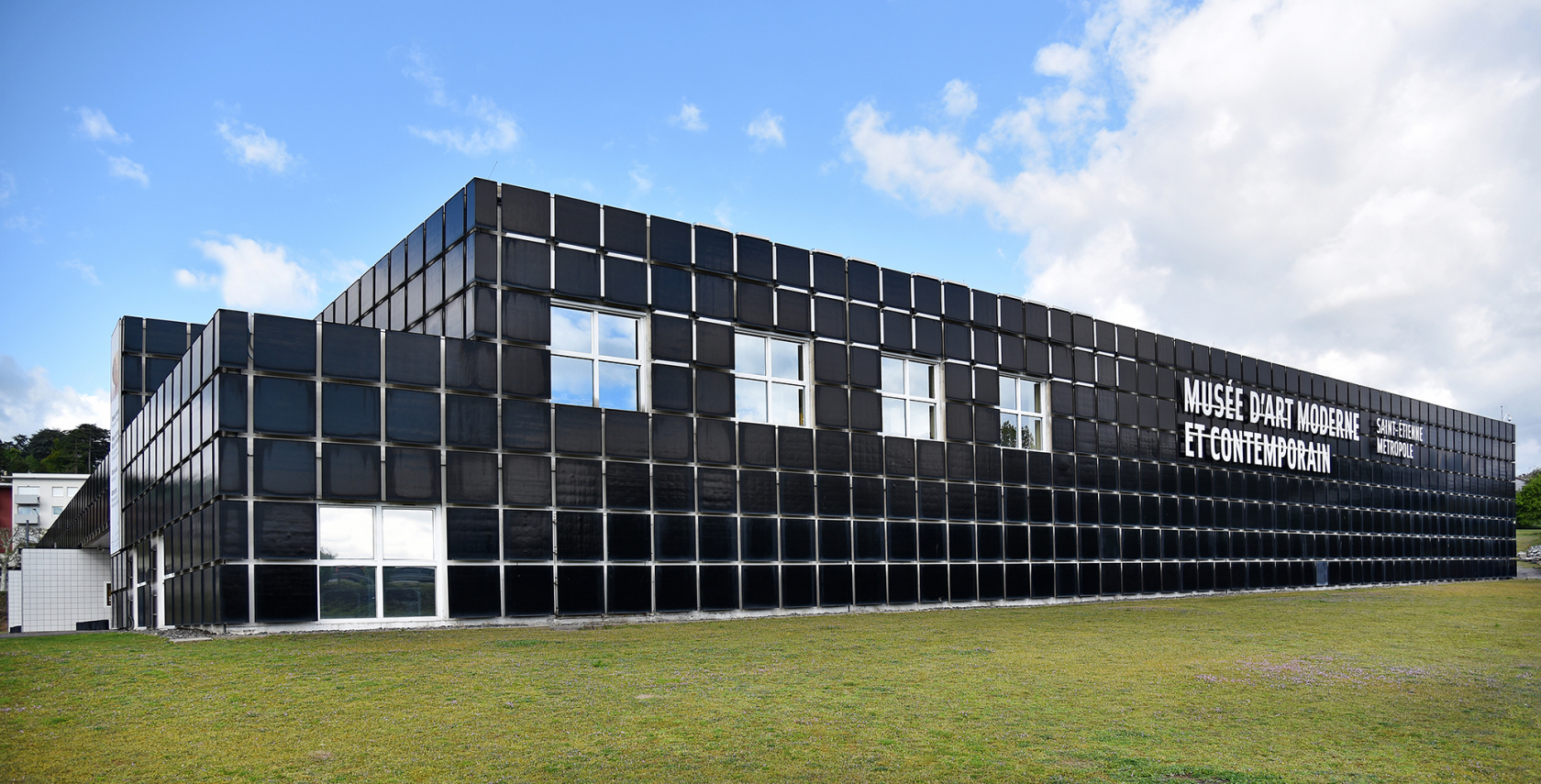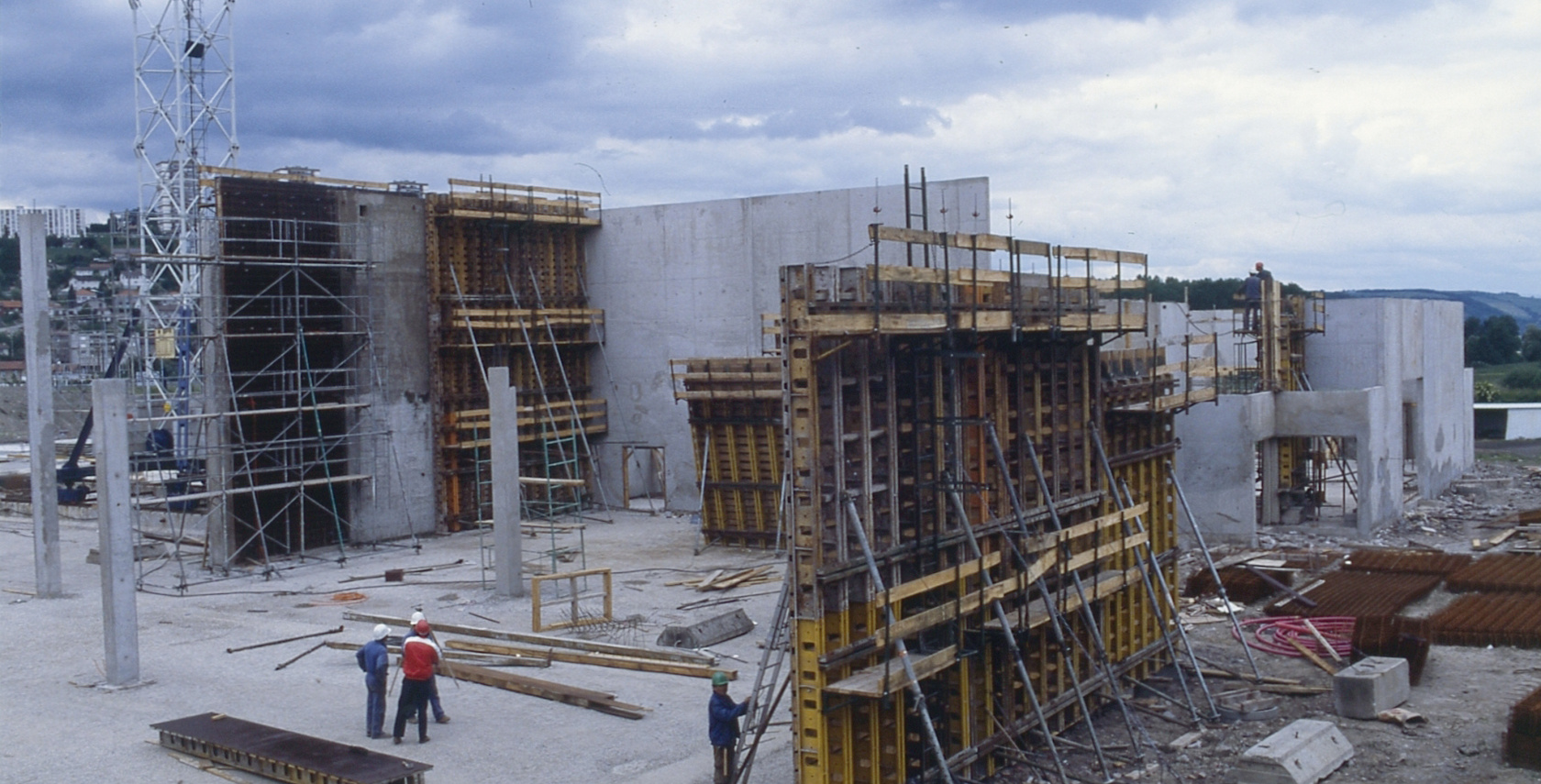187 YEARS OF HISTORY
Created in 1987, the Museum roots in a rich history that goes back in 1833.
The Palais des arts was inaugurated in 1833. It subsequently became the present Museum of Art and Industry (MAI) and housed until 1987 the collection of today’s Musée d'art moderne et contemporain (MAMC+). Maurice Allemand, the museum’s curator, gave priority to modern art from 1947. Bernard Ceysson became the Museum’s director in 1967 and for the next twenty years orientated his exhibition and acquisition policy towards contemporary art. The Museum’s collection came to gain an international dimension. Between 1986 and 1987 Bernard Ceysson also directed the National Museum of Modern Art - Centre Georges Pompidou, while at the same time supervising the construction of the present Musée d’art moderne et contemporain de Saint-Étienne and preparing for the opening of a new prestigious Museum!
The Musée d'art moderne opened on December 10th 1987. It was one of the first museums of contemporary art created outside Paris and inherited the collection assembled by the MAI since the 19th century. It also developed collections of photography and design. The "MAM" was to benefit from important donations and the exceptional patronage of the Casino group.
Jacques Beauffet succeeded Bernard Ceysson in 1998. He continued to enrich the collection and developed the Jean Laude library and its collection of documents on 20th century art. From 2003 to 2016, Lóránd Hegyi, the Hungarian art historian, resolutely orientated the Museum towards an international dimension with his exhibition policy. He was particularly interested in artists from Eastern Europe and Asia. On his departure, Martine Dancer-Mourès was nominated as temporary director and supervised the programming for the 30th anniversary of the Museum. In October 2017, Aurélie Voltz officially took up her post as the new General Director of the MAMC+.
A SINGULAR ARCHITECTURAL IDENTITY
The MAMC+ was built on the northern outskirts of Saint-Étienne based on the plans of the architect Didier Guichard. The building’s appearance is modern, refined and operational. It is covered by a grid arrangement of black ceramic, in homage to the town’s mining past. This singular facade forms the design of the Museum’s current logo. The Museum has at its disposal exceptional display volumes: 3,000 m² of exhibition surface area with a wall height of 8 meters, able to meet the challenges of artists and exhibition curators.
FUTURE PERSPECTIVES
Sharing exhibition projects with other international museums is now at the very heart of the museum policing, extending its influence on the international scene. Innovation and experimentation in the digital sphere place the Museum firmly in the context of its time. The MAMC+ is thus in tune with its public: it proposes digital tools adapted to modern practices in constant permutation. Finally, making the 20,000 works of the collection available online represents the major goal of achieving access to art for all.


